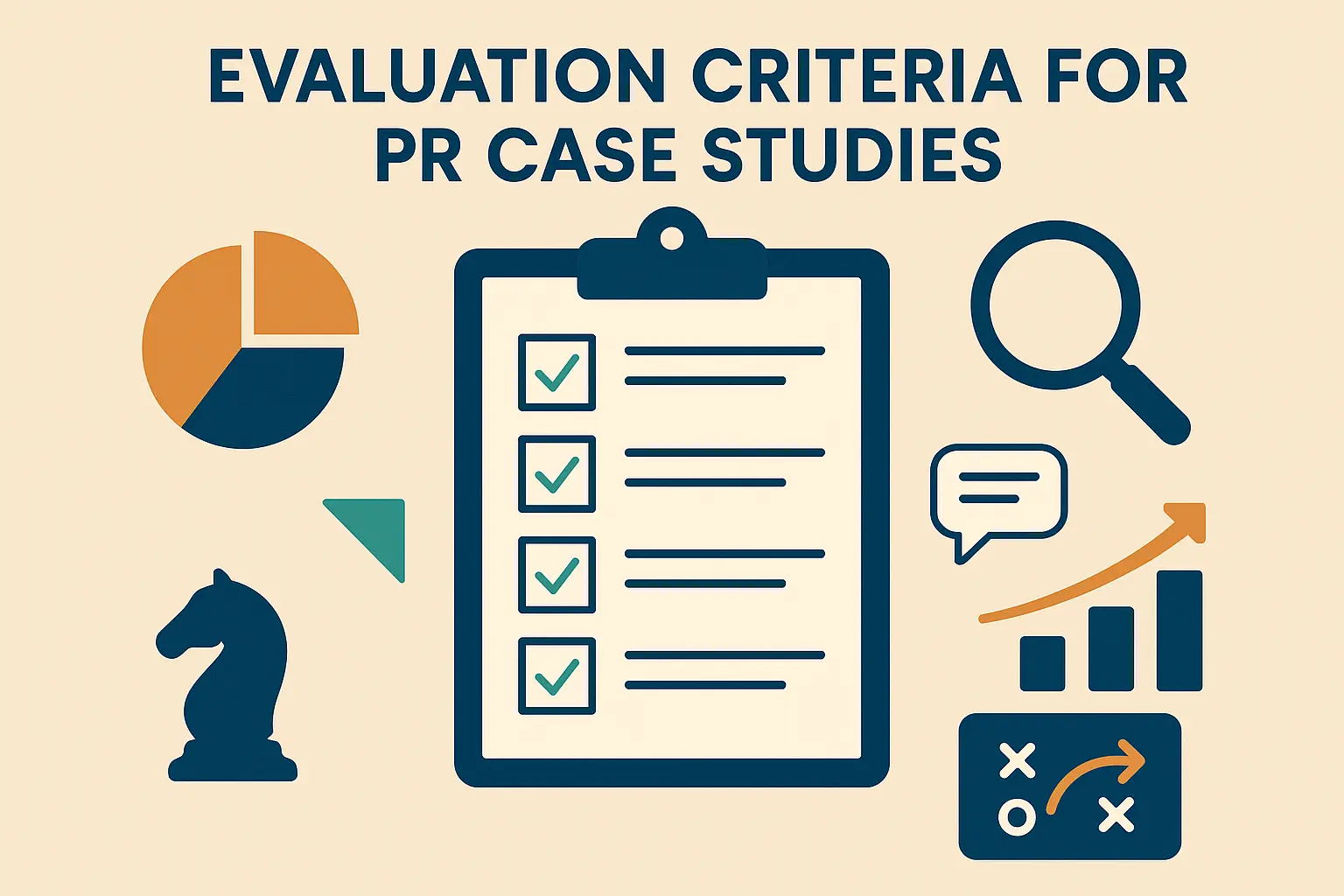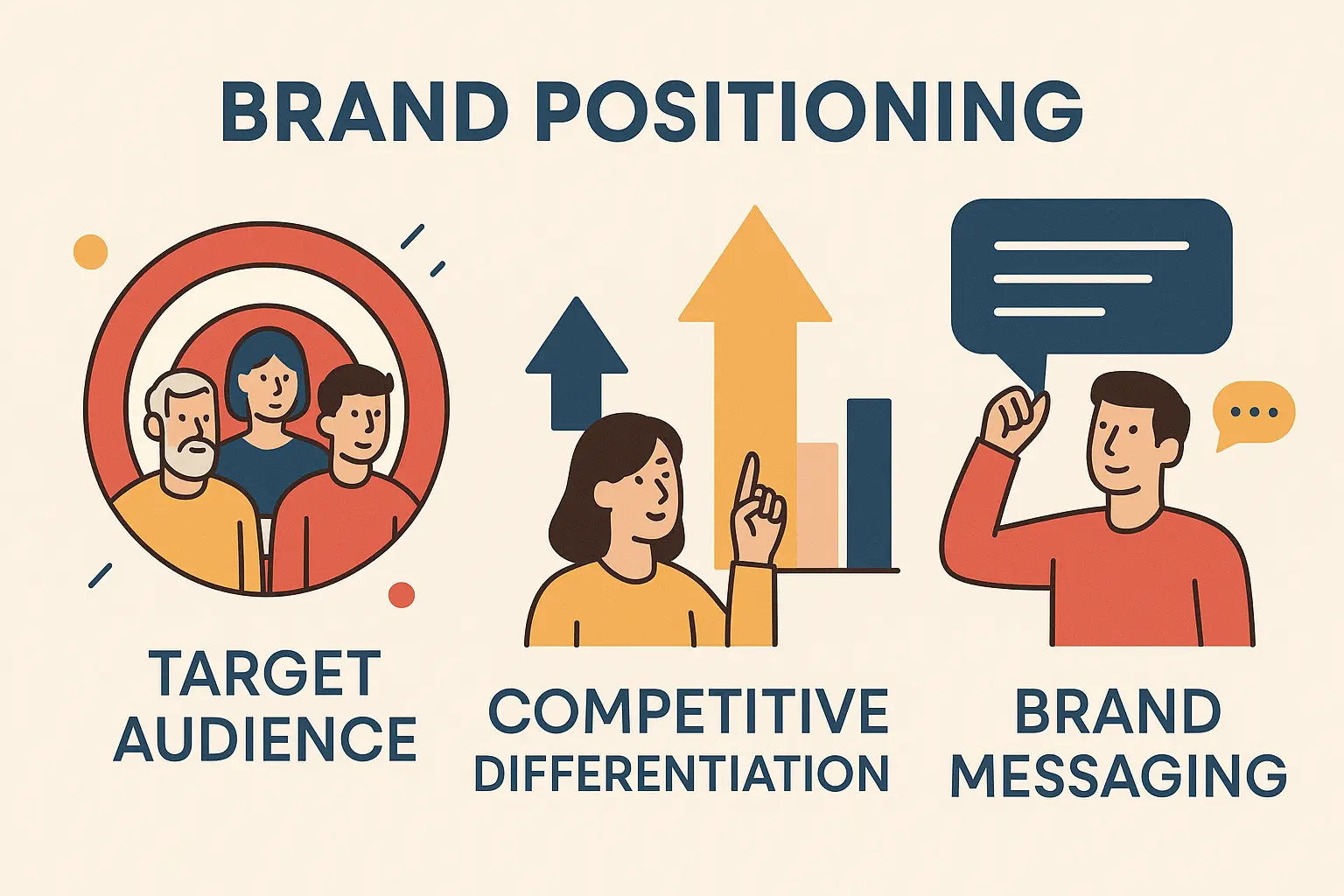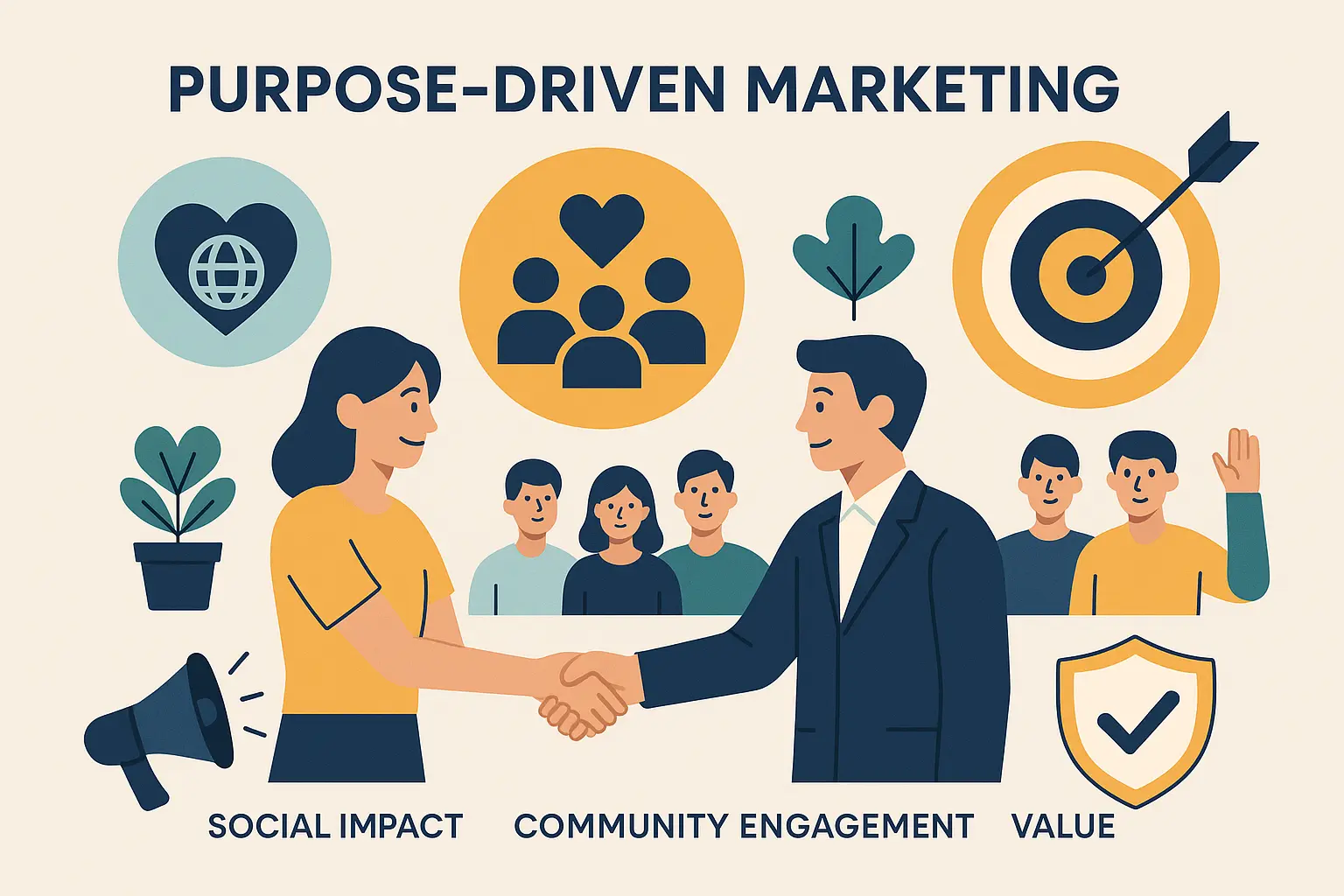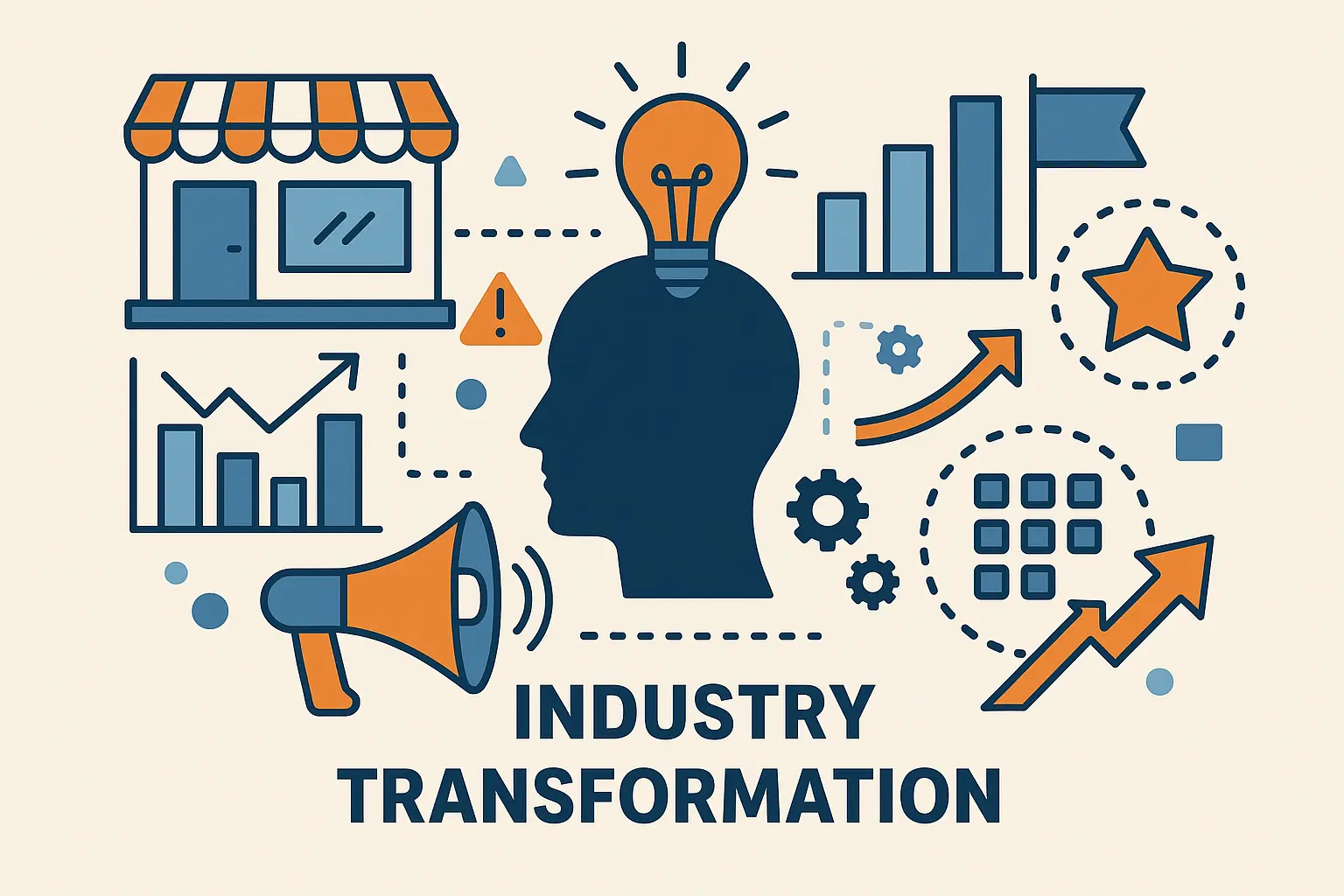I’ll never forget the first time I saw a PR campaign completely backfire. It was 2017, and I watched United Airlines turn what should have been a minor operational issue into a billion-dollar nightmare in real-time on Twitter. That’s when it hit me—PR isn’t just about press releases and media coverage. It’s about understanding people, psychology, and what happens when everything goes sideways.
I remember diving into my first PR case study collection years ago, expecting dry corporate reports. Instead, I found myself completely absorbed by stories of brands that turned disasters into triumphs, unknowns that became household names, and companies that redefined entire industries through smart communication. These weren’t just marketing wins—they were masterclasses in human psychology, crisis management, and strategic thinking that changed how I view every brand interaction.
Source: University of Texas Digital Library
Table of Contents
-
What Makes a PR Case Study Worth Your Time
-
Crisis Management Masters: When Everything Goes Wrong
-
Brand Positioning Powerhouses: Making Your Mark
-
Digital Innovation Champions: Social Media Success Stories
-
Purpose-Driven Campaigns: When Values Drive Value
-
Product Launch Legends: Innovation Communication Done Right
-
Industry Transformation Leaders: Changing the Game
-
Deep Dive Analysis: The Complex Cases That Changed Everything
-
How These Case Studies Stack Up Against Success Criteria
-
Why The Marketing Agency’s Approach Mirrors These Wins
TL;DR
-
The best PR case studies show actual business impact, not just fancy metrics that sound impressive but mean nothing
-
Crisis management works when you put people before profits and just tell the truth
-
Zero-budget campaigns can crush million-dollar efforts when you actually understand your audience
-
Purpose-driven marketing only works when you mean it—people can smell fake values from miles away
-
Digital success comes from understanding each platform’s culture, not just posting the same content everywhere
-
Product launches succeed when they tell stories that connect to what people actually care about
-
Industry transformation happens when you create new categories instead of fighting in crowded ones
-
Smart risk management means thinking long-term, even when everyone’s freaking out about short-term backlash
What Makes a PR Case Study Worth Your Time
Look, I’ve wasted way too many hours reading “successful” PR campaigns that sound amazing on paper but offer zero help for real-world situations. The difference between actually useful case studies and marketing fluff? It comes down to whether they pass some basic smell tests.

Most case studies are just dressed-up bragging. “We got 50 million impressions!” Cool story—did you sell anything? “Brand awareness increased 200%!” Okay, but did people actually buy your product or just scroll past your ad?
Here’s what I look for when I’m trying to figure out if a case study is worth my time:
Does It Solve a Problem I Actually Have?
If you’re dealing with a crisis and the case study is about launching a new flavor of energy drink, it’s not going to help you. Sounds obvious, but you’d be surprised how many people get distracted by shiny campaigns that have nothing to do with their situation.
The most valuable case studies show crystal-clear connections between campaign goals and business objectives. I’m talking about campaigns that solve specific, measurable problems—not vague “increased brand awareness” claims that could mean anything.
Can I Actually Afford to Do Something Similar?
I love reading about Nike’s massive campaigns, but if your marketing budget is closer to a local coffee shop than a Fortune 500 company, those million-dollar celebrity endorsements aren’t exactly actionable advice.
Look for campaigns that achieved outsized results relative to their investment, not just big-budget productions with predictable outcomes. The best examples show you how to punch above your weight class.
Did It Actually Work Beyond the Initial Buzz?
The internet is littered with “viral” campaigns that everyone talked about for a week and then completely forgot. The campaigns worth studying are the ones that built something lasting.
Similar to how our marketing roi calculator helps businesses measure campaign effectiveness, the strongest examples showcase both hard numbers (conversions, sales) and lasting changes (brand perception shifts, customer loyalty). Media coverage means nothing if it doesn’t translate to business results.
Could This Blow Up in My Face?
Every great campaign carries risk. The best case studies are honest about what could have gone wrong and how they planned for it. If a case study makes everything sound easy and risk-free, it’s probably leaving out the important parts.
You want case studies that show how campaigns handled unexpected challenges or potential backlash. These insights become invaluable when your own campaigns face unforeseen obstacles.
Crisis Management Masters: When Everything Goes Wrong
Crisis management is where you really see who knows what they’re doing and who’s just winging it. When everything’s falling apart, your response doesn’t just fix the immediate problem—it defines your brand for years.

1. Johnson & Johnson’s Tylenol Crisis: The Gold Standard
Back in 1982, seven people died from cyanide-laced Tylenol capsules in Chicago. This wasn’t just a PR crisis—it was potentially the end of one of the most trusted brands in America.
Here’s what most companies would have done: lawyer up, say as little as possible, maybe blame someone else in the supply chain. J&J did the opposite. They immediately pulled 31 million bottles off shelves—$100 million worth of product—before anyone even asked them to.
But here’s the part that really matters: they didn’t just throw money at the problem. They redesigned their packaging with tamper-evident seals, worked openly with law enforcement, and kept the public informed every step of the way.
The result? Tylenol not only survived but came back stronger. Why? Because when people’s lives were on the line, J&J cared more about doing the right thing than protecting their profits. That kind of authenticity is impossible to fake.
This approach mirrors principles we see in modern crisis management, similar to how our competitive response strategies help companies navigate market challenges. The key lesson: authentic concern for people trumps damage control every time.
2. Airbnb’s Discrimination Problem: Fixing the System, Not Just the Headlines
In 2016, Airbnb had a serious problem: hosts were discriminating against guests based on race. This wasn’t just bad PR—it was potentially illegal and definitely not what the company stood for.
They could have issued a generic statement about “not tolerating discrimination” and hoped it would blow over. Instead, they actually fixed the problem. New policies, bias training for hosts, and the “We Accept” campaign that wasn’t just marketing fluff—it was backed by real changes.
Three billion impressions and a 20% drop in discrimination complaints later, they’d turned a potential disaster into proof that they actually cared about their values.
3. KFC’s “FCK” Campaign: When Honesty Beats Corporate Speak
Sometimes the best crisis response is just being honest about how badly you screwed up. When KFC UK ran out of chicken (I know, I know), they had two choices: corporate damage control or own it completely.
They chose option two with a simple newspaper ad that rearranged their logo to spell “FCK” and said “We’re Sorry.” No excuses, no blame-shifting, just “Yeah, we messed up.”
One billion impressions later, people weren’t mad at KFC—they were sharing the ad and laughing about it. Sometimes admitting you’re human works better than pretending you’re perfect.
4. United Airlines: How Not to Handle a Crisis
Then there’s United Airlines in 2017. A passenger got dragged off an overbooked flight, someone filmed it, and it went viral. United’s response? Blame the passenger and use corporate language that made them sound like robots.
Cost them $1.4 billion in market value and congressional hearings. The lesson? When you mess up, own it immediately and sound like you actually care about people, not your stock price.
Brand Positioning Powerhouses: Making Your Mark
Building a brand position that actually matters isn’t about clever taglines or pretty logos. It’s about fundamentally changing how people think about your entire category.
5. Tesla: The Company That Doesn’t Advertise
Tesla built a trillion-dollar company without spending a dime on traditional advertising. How? They understood something most companies miss: if your product is genuinely revolutionary and you can tell that story authentically, people will do your marketing for you.
Elon Musk basically turned himself into Tesla’s head of marketing. Every tweet, every product launch, every slightly crazy announcement generates more media coverage than most companies get with million-dollar ad campaigns.
But here’s the thing—this only works if you actually have something revolutionary to talk about. You can’t fake your way into this kind of organic buzz. Tesla’s approach works because they combined product excellence with strategic storytelling and customer evangelism.

6. Dollar Shave Club: $4,500 That Changed Everything
In 2012, a startup nobody had heard of spent $4,500 on a launch video. That video got 26 million views, 12,000 orders in the first 48 hours, and eventually led to a $1 billion acquisition by Unilever.
The secret wasn’t production value or celebrity endorsements. It was understanding that guys were frustrated with overpriced razors and talking to them like actual human beings instead of demographic segments.
The campaign disrupted the entire razor industry through humor, direct communication, and a subscription model that made sense. They succeeded by addressing real customer frustrations with authentic, entertaining messaging.
7. Glossier: When Your Customers Become Your Marketing Team
Glossier figured out something brilliant: instead of talking at customers, they talked with them. They treated their community like collaborators, not targets.
Their strategy included treating customers as co-creators, using social media for product development feedback, building Instagram-first visual identity, and creating retail experiences designed for social sharing. Ninety percent customer retention rate and $100+ million in annual revenue later, they’d proven that authentic relationships beat traditional advertising every time.
8. Patagonia: “Don’t Buy This Jacket”
On Black Friday, when every other company is screaming “Buy! Buy! Buy!”, Patagonia ran an ad telling people not to buy their jacket unless they really needed it.
Sales went up 30%. Why? Because in a world full of fake corporate responsibility, Patagonia’s authentic commitment to their environmental values made them stand out. People bought more because they trusted the company actually meant what they said.
9. Zoom’s Pandemic Communication Strategy
When Zoom scaled from 10 million to 300 million daily users during COVID-19, they could have hidden behind corporate speak about “unprecedented demand.” Instead, they were transparent about capacity challenges, security improvements, and service expansions.
Their honest, helpful approach during crisis built lasting brand trust that extended beyond pandemic necessity. The key was addressing user concerns proactively rather than defensively.
Digital Innovation Champions: Social Media Success Stories
Social media rewards authenticity over polish. The brands winning online understand that each platform has its own culture, and you can’t just copy-paste the same message everywhere.

10. Wendy’s Twitter: The Art of the Roast
Wendy’s transformed their Twitter account into must-follow entertainment by roasting competitors and customers with wit that felt genuinely funny, not try-hard corporate humor.
The key? They understood Twitter culture and participated authentically instead of just broadcasting marketing messages. They didn’t use Twitter—they got Twitter. Their “beef” with competitors created viral moments while reinforcing brand personality and fresh food messaging.
11. Nike’s Kaepernick Campaign: Calculated Controversy
When Nike featured Colin Kaepernick in their anniversary campaign, they knew exactly what they were doing. They analyzed their customer demographics and realized their future growth came from younger, more diverse consumers who cared about social justice.
Some people burned their Nike shoes. Stock price dropped initially. But online sales jumped 31%, and brand favorability improved with their target demographic. Sometimes taking a stand strengthens your position with the people who matter most to your business.
This strategic risk assessment approach is similar to methodologies we explore in our nike case study analysis, where calculated controversy can strengthen brand positioning when aligned with core values.
12. Spotify Wrapped: Making Data Feel Personal
Every December, Spotify turns user listening data into personalized, shareable content that generates billions of social media impressions. It’s genius because it makes users the heroes of their own stories while showcasing what Spotify can do.
The campaign works because it’s genuinely useful and fun for users, not just marketing disguised as entertainment. It drives app engagement, user retention, and organic brand advocacy through data storytelling.
13. TikTok’s Creator Fund: Speaking to Your Ecosystem
TikTok’s Creator Fund launch addressed creator monetization concerns while positioning the platform as creator-friendly versus competitors. The $1 billion commitment generated positive coverage and attracted high-profile creators.
They emphasized creator support and success stories while addressing content moderation concerns proactively. The approach built creator loyalty during competitive pressure from other platforms.
14. LinkedIn’s Professional Development Strategy
LinkedIn shifted from networking platform to professional development hub through content campaigns featuring career advice, industry insights, and skill development resources.
The strategy positioned LinkedIn as essential for career growth rather than just job searching, increasing user engagement and platform stickiness. Content became the differentiator in a crowded professional networking space.
Purpose-Driven Campaigns: When Values Drive Value
Purpose-driven marketing works when it’s real. When it’s performative, people see right through it.

15. Ben & Jerry’s: Activism That Actually Costs Something
Ben & Jerry’s has been taking controversial political stances for decades, from marriage equality to racial justice. They’re willing to lose customers over their values, which is exactly why their remaining customers are so loyal.
The brand’s willingness to take controversial stances has built deep loyalty among aligned consumers while creating clear brand differentiation. They’ve maintained premium pricing and strong market share despite periodic boycott threats because their values are authentic, not opportunistic.
16. Microsoft’s AI Ethics: Getting Ahead of the Problem
Instead of waiting for AI ethics to become a crisis, Microsoft proactively communicated about responsible technology development. They positioned themselves as thought leaders while addressing public concerns before they became problems.
Their strategic framework included transparent research sharing, ethical AI principles publication, and stakeholder engagement. The approach influenced enterprise sales and regulatory relationships positively.
17. Unilever’s Sustainable Living: Purpose That Pays
Unilever proved that sustainable brands grew 69% faster than traditional brands. The key was integrating sustainability into actual product development, not just using it as a marketing message.
The success came from making sustainability part of product innovation rather than just messaging. Purpose became a competitive advantage, not just corporate responsibility theater.
18. Salesforce’s Equality Initiatives
Salesforce’s commitment to pay equity became central to their brand message, supported by annual transparency reports, policy advocacy, and community investment. They conducted company-wide pay audits and spent $16 million addressing pay gaps.
Business impact included improved talent attraction, better employee retention, and strengthened B2B relationships. The equality focus became a business differentiator in competitive markets.
Product Launch Legends: Innovation Communication Done Right
Great product launches don’t just announce features—they tell stories that connect those features to bigger cultural moments and human aspirations.

19. Apple’s iPhone: The Evolution of Hype
Apple’s iPhone launches became cultural events, not just product announcements. The secrecy, staged reveals, and premium positioning created anticipation that traditional advertising couldn’t match.
Key elements include building anticipation through secrecy, staged information release, media event production value, and technical specification communication for different audiences. The framework adapts messaging strategy to product lifecycle stages.
20. Impossible Foods: Reframing the Conversation
Instead of positioning plant-based meat as an alternative, Impossible Foods positioned it as superior. They targeted meat-eaters, not vegetarians, and focused on taste first, values second.
Their strategy included scientific credibility through research partnerships, celebrity chef endorsements, and blind taste tests that challenged preconceptions about plant-based food. They changed the conversation from “alternative” to “better.”
21. Clubhouse: The Power of Artificial Scarcity
Clubhouse’s invite-only launch created genuine FOMO that drove more media coverage and user demand than any traditional app launch strategy. Making people feel special and exclusive can be more powerful than making your product accessible to everyone.
The exclusivity strategy generated massive PR coverage while building an engaged user community. The approach worked because it made users feel special while creating authentic word-of-mouth marketing.
22. Peloton: Selling Transformation, Not Equipment
Peloton’s communication strategy positioned home fitness equipment as premium lifestyle choice rather than exercise necessity. Their approach combined technology innovation messaging with community building and instructor personality development.
They sold lifestyle transformation, not just exercise equipment. The multi-channel approach included product demonstrations, instructor content creation, user success stories, and community events that created a comprehensive brand narrative.
Industry Transformation Leaders: Changing the Game
The most powerful campaigns don’t just promote products—they create entirely new ways of thinking about problems and solutions.

23. HubSpot: Creating a Category
HubSpot didn’t just sell marketing software—they created the entire concept of “inbound marketing.” Through consistent thought leadership, educational content, and industry research, they established themselves as the authority on a methodology they invented.
Their content strategy included annual industry reports, educational certification programs, conference hosting, and free tool offerings that established HubSpot as industry authority while generating qualified leads, similar to approaches we analyze in our hubspot case study breakdown. Category creation led to market leadership and successful IPO.
24. Stripe: Speaking Developer
While other payment companies focused on business decision-makers, Stripe talked directly to developers in their own language. By prioritizing developer experience over marketing messages, they built authentic credibility that translated into business adoption.
Their approach included technical documentation excellence, developer tool innovation, and community event sponsorship. They understood their audience and spoke authentically rather than translating through marketing speak.
25. Shopify: Empowering Entrepreneurs
Shopify positioned themselves as the champion of small business success, not just an e-commerce platform. They made entrepreneurs the heroes of their stories while positioning Shopify as the essential tool for that success.
The “Make Commerce Better for Everyone” campaign featured success stories, educational content, and entrepreneurship advocacy that created emotional connection with target audience. They built a movement around small business empowerment rather than just selling software features.
Deep Dive Analysis: The Complex Cases That Changed Everything
Some campaigns deserve deeper analysis because their strategic complexity offers insights you can’t get from surface-level summaries.

Tesla’s Complete Framework: How Zero-Budget Marketing Actually Works
Now, before you get all starry-eyed about Tesla’s “zero-budget” marketing, let’s be real—having Elon Musk as your CEO is basically like having a walking, tweeting PR machine. Most of us don’t have that luxury.
But here’s what you can actually learn from their approach:
Elon Musk functions as Chief Brand Officer rather than hiring celebrity spokespeople. His Twitter account serves as primary communication channel, generating news coverage through product announcements, company updates, and strategic controversy. This saves millions in spokesperson fees while maintaining authentic brand voice.
Product launches become entertainment events rather than corporate presentations. The Cybertruck reveal, despite the “failed” window demonstration, generated more media coverage than any traditional automotive launch. The authenticity of unexpected moments amplified message reach beyond scripted perfection.
Customer evangelism programs treat owners as community members rather than transactions. Tesla creates organic word-of-mouth marketing through referral programs, exclusive events, and social media amplification. Customers become brand ambassadors because they feel part of something bigger.
Nike’s Kaepernick Campaign: How to Calculate Controversial Risks
Nike’s decision required careful analysis of potential backlash versus long-term brand positioning benefits. Here’s how they actually made that call:
They analyzed their customer demographics and realized their core growth demographic—younger, more diverse consumers—aligned with social justice messaging, even if some existing customers might react negatively. The company prioritized future market growth over current customer retention.
They prepared for stock price volatility and planned long-term metrics for campaign success evaluation rather than focusing on immediate reactions. Nike anticipated the backlash and had crisis communication strategies ready.
The campaign demonstrated strategic patience in brand building that paid off over time. Sometimes you have to be willing to lose some battles to win the war.
How These Case Studies Stack Up Against Success Criteria
Not all successful campaigns are created equal. Here’s how these examples measure against the evaluation criteria that actually matter.

The Real Winners: Campaigns That Actually Built Something
Tesla’s product innovation and communication strategy perfectly aligned with brand positioning as technology leader. Every communication choice reinforced their core narrative about sustainable transportation and innovation leadership.
Dollar Shave Club achieved the ultimate ROI demonstration: $4,500 investment generated $1 billion acquisition value. The campaign proved that creative strategy could overcome massive budget disadvantages.
Johnson & Johnson’s crisis response aligned with company values and long-term reputation management priorities. Their willingness to sacrifice short-term profits for stakeholder safety demonstrated authentic corporate values.
The Creative Standouts That Actually Worked
KFC’s “FCK” campaign demonstrated how authentic humor could turn crisis into viral success. Simple creative execution generated massive impact through cultural relevance and timing.
Spotify’s Wrapped campaign leverages existing user data to create personalized, shareable content that drives massive organic reach annually. It’s user-generated content at scale, powered by data insights.
Clubhouse’s invite-only strategy created unprecedented organic demand through artificial scarcity psychology. The approach generated more media attention than traditional app launches.
The Budget Efficiency Champions
Here’s what drives me crazy about most PR case studies—they showcase million-dollar campaigns that most businesses can’t afford. But some of the best examples prove you don’t need a massive budget:
Wendy’s Twitter strategy required minimal budget investment but generated millions of impressions through authentic platform engagement and cultural relevance.
Tesla’s zero-budget approach proves that strategic communication can replace traditional advertising when product excellence and authentic storytelling align.
Ben & Jerry’s activism campaigns work because they’re willing to take real stands that cost them customers, which paradoxically makes their remaining customers more loyal.
Why The Marketing Agency’s Approach Mirrors These Wins
Look, most marketing agencies will promise you the moon and deliver a handful of vanity metrics. The campaigns we’ve analyzed here work because they focus on what actually matters: changing behavior, not just generating impressions.
The Marketing Agency’s data-driven, performance-focused methodology aligns with the strategic principles demonstrated in successful PR case studies. Their scientific approach to market analysis, measurable ROI focus, digital marketing integration, and transparent partnership model positions clients to achieve breakthrough results similar to top-performing campaigns.
Data-Driven Decisions That Actually Work
The most successful campaigns relied on scientific analysis rather than creative intuition alone. Tesla’s zero-budget marketing succeeded through careful audience analysis and strategic timing. Nike’s Kaepernick campaign required sophisticated demographic research and risk assessment modeling.
The Marketing Agency’s scientific approach to market analysis identifies gaps that traditional agencies miss, ensuring PR strategies build on solid data foundations rather than assumptions, similar to methodologies we explore in our advanced analytics strategic growth framework.
ROI That Goes Beyond Pretty Numbers
Every high-performing case study demonstrated clear business impact beyond reach and impressions. Dollar Shave Club’s video investment generated measurable acquisition value. Glossier’s community approach achieved quantifiable retention rates.
Performance-focused agencies ensure PR efforts tie directly to business outcomes—whether through lead generation, brand visibility improvements, or conversion rate optimization. The emphasis on measurable results ensures marketing investments drive actual business growth.
Integrated Digital Marketing That Makes Sense
Modern PR campaigns succeed through seamless integration with broader digital marketing strategies. Spotify’s Wrapped campaign combined data analytics with social media amplification. LinkedIn’s professional development content supported both brand positioning and platform engagement.
Comprehensive marketing approaches combining SEO, PPC, email marketing, and inbound strategies ensure PR efforts amplify across all digital touchpoints rather than operating in isolation.
AI-Enhanced Strategy Development
Forward-thinking campaigns increasingly leverage artificial intelligence for audience segmentation, content optimization, and performance prediction. The integration of AI-driven analytics into marketing processes positions clients to execute PR campaigns with machine precision while maintaining human creativity.
This combination enables real-time campaign optimization and predictive performance modeling that traditional PR approaches cannot match, utilizing approaches we detail in our creating continuously learning systems ai guide.
Transparent Partnership That Actually Helps
The strongest case studies featured authentic brand voices and transparent stakeholder communication. Johnson & Johnson’s crisis response succeeded through radical transparency. Patagonia’s purpose-driven marketing worked because of authentic value alignment.
Marketing agencies that share real insights rather than vanity metrics and co-create strategy with client teams ensure PR campaigns reflect genuine brand values rather than manufactured messaging.
Final Thoughts
Here’s the thing about PR that actually works: it’s not about getting coverage or going viral. It’s not about perfect execution or having the biggest budget. It’s about changing how people think, feel, and act regarding your brand.
The campaigns that stand the test of time combine creative thinking with strategic planning, authentic messaging with measurable results, and innovative approaches with practical execution. They prove that when PR aligns with genuine business value and authentic brand values, it becomes one of the most powerful tools for sustainable growth.
Whether you’re managing a crisis, launching a product, or building brand awareness, the key is understanding that great PR isn’t about perfect execution—it’s about authentic communication that solves real problems for real people.
The brands that win long-term? They figure out who they really are, find the people who care about that, and then talk to them like human beings. It’s not rocket science, but it’s harder than it sounds.
So what can you actually do with this if you’re not running a billion-dollar company? Start small. Pick one platform where your customers actually hang out, and just be genuinely helpful there. No corporate speak, no buzzwords—just solve their problems. Be honest when you mess up. Stand for something that actually matters to you, even if it costs you some customers.
Most PR campaigns fail not because they lack creativity or budget, but because they’re trying to be something they’re not. The brands that win? They figure out who they really are, find the people who care about that, and then just… talk to them like human beings.



